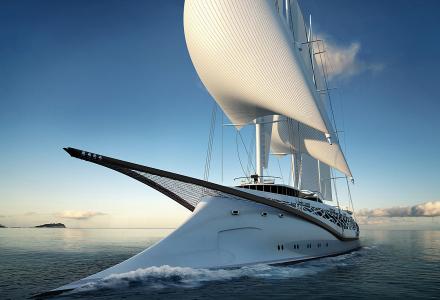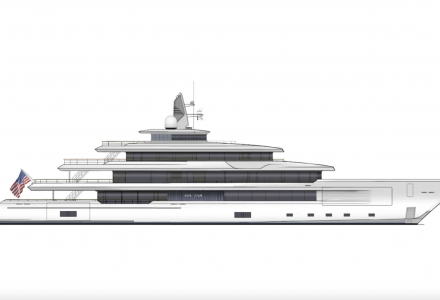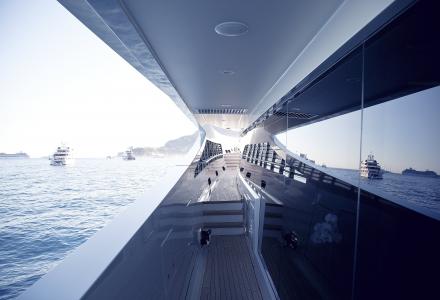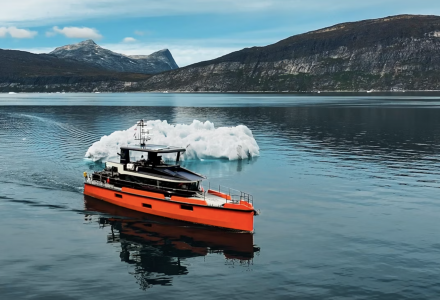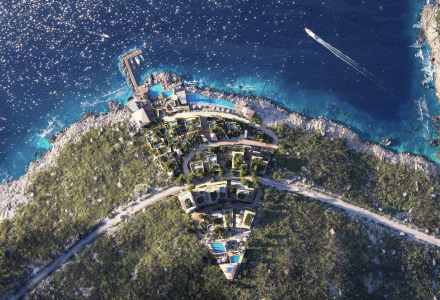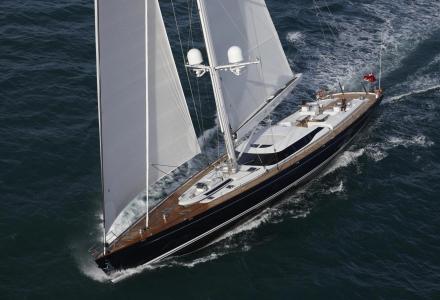Drawing inspiration from ancient naval architecture can be not only for aesthetic, but also for practical purposes, as long as human heritage is an inexhaustible source of technical solutions. Although some of the following concepts seem so out of the box that they are probably meant to remain as designers’ dreams, they enrich the yachting imagery and, in that sense, move the industry forward.
Phoenicia
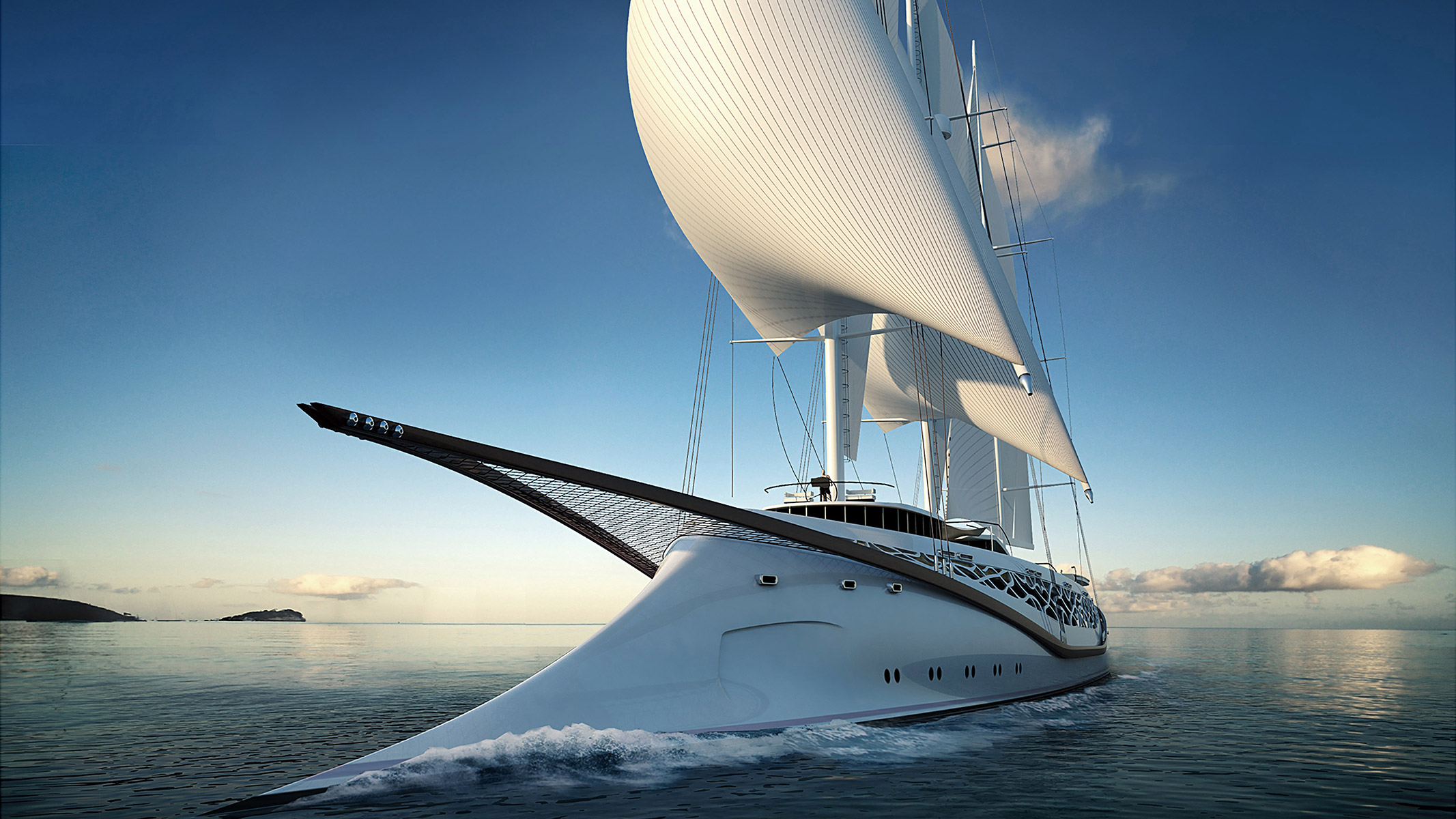
Phoenicia is a 110-meter sailing yacht concept reminiscent of an ancient royal ship by an Italy-based designer of Russian origin, Igor Lobanov. She derives her name from a civilization originated in the 1500s BC in the Mediterranean. Phoenicians are believed to be the people, who invented one of the first alphabets, which served as the basis for the Greek literacy. Those ancient traders influenced many nations in the area, acting as a link between the Eastern and Western cultures.
Shaped like a top part of the star, the yacht has an unconventional bow, which is one of many hints to ancient Mediterranean influence.
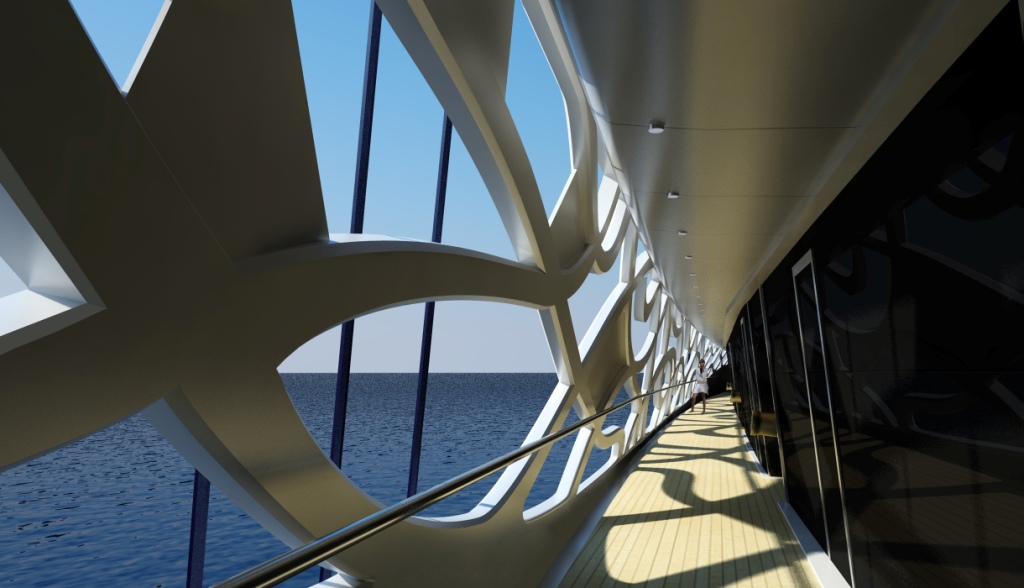
The key concept idea behind Phoenicia is an all-around open deck arranged as a gallery with a special Arabian pattern, giving an interesting play on light and shade. The superyacht has a generous open deck space at the aft, enough even to host a helipad. Other features include automated Venetian blinds that can be closed as a gradient from the bow to the aft of the boat and from the top to the bottom, or opened irregularly, so that the light plays inside the interior.
Norse
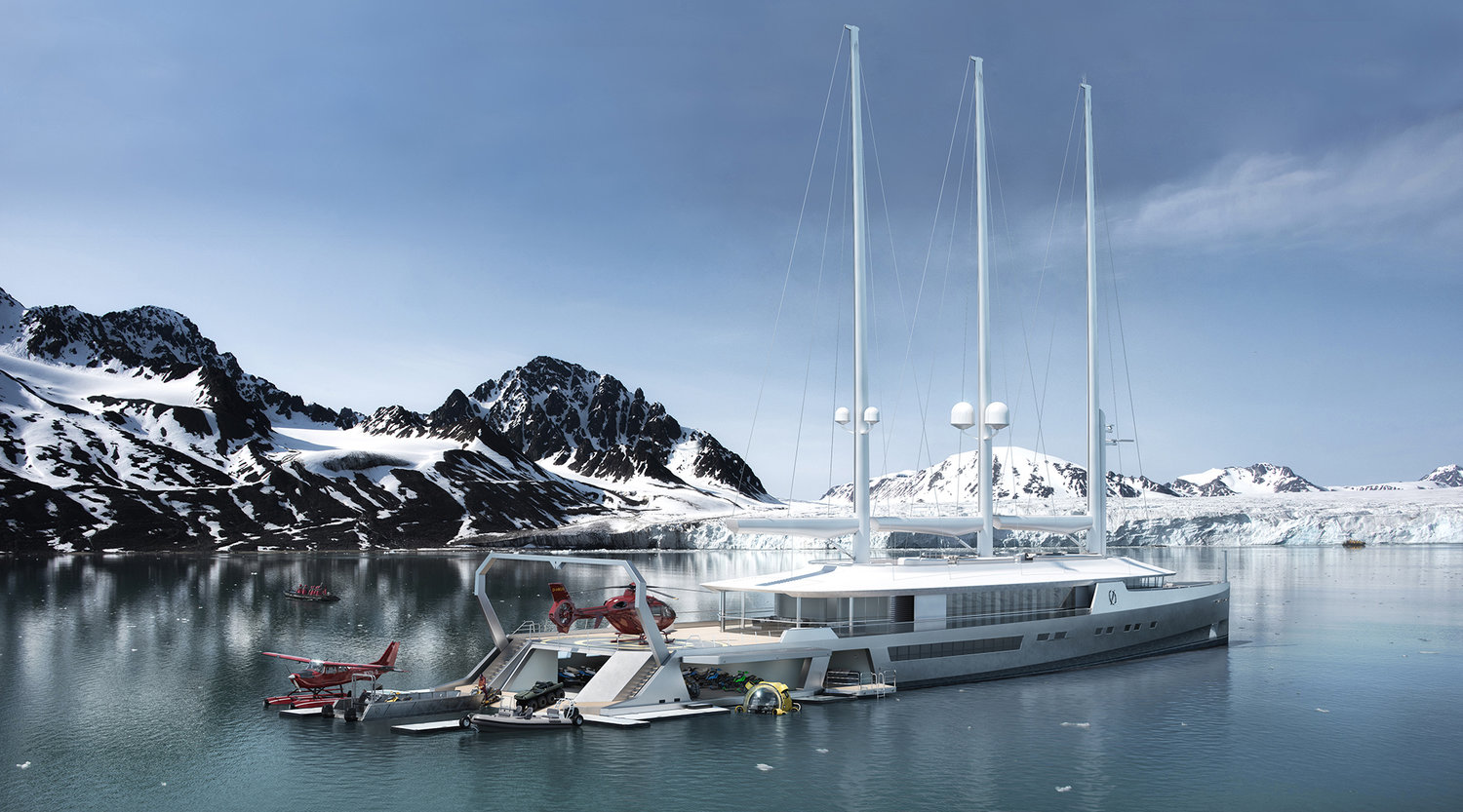
Last year British design studios BMT Nigel Gee and Oliver Stacey Design introduced a 80-meter sail-assisted explorer yacht concept named Norse that was inspired by Viking boats.
With a profile borrowed from the longboat, Norse offers unprecedented for a vessel of her size access to shallow waters. Her simple, low-aspect sail plan features three identical wing masts, in combination with matched in-boom furling mainsails. She is designed for voyaging to both Poles and exploring some of the world’s most remote destinations with assistance of a hybrid propulsion system, which can take over as the winds drop. In line with the vessel’s transatlantic range and extended self-sustainability, Norse will be built to Ice Class 1d, meeting Category C requirements of the Polar Code.
Origami
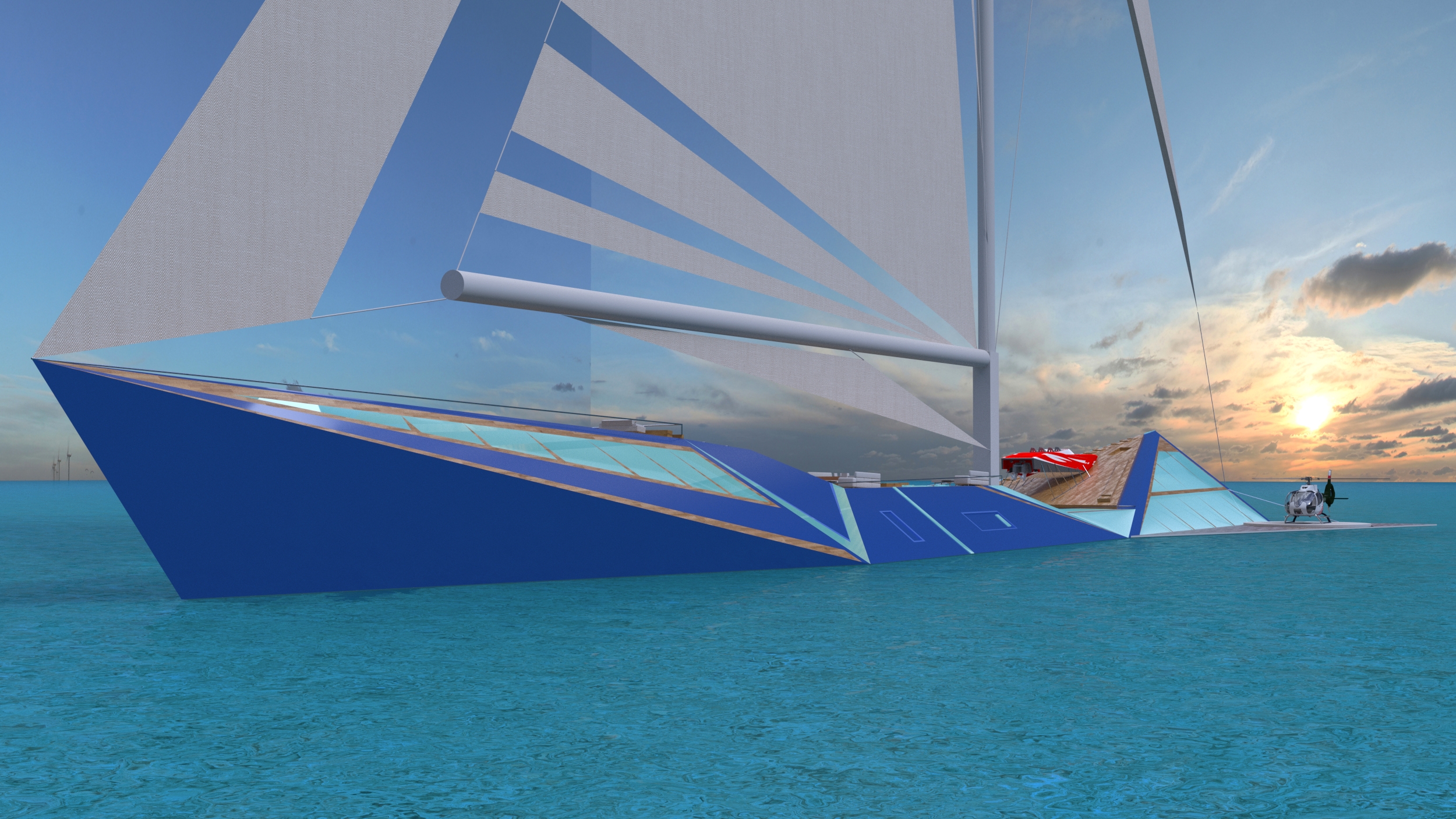
The Monaco-based designer George Lucian created a 100-meter sailing yacht inspired by Oriental maritime tradition and Japanese craft of folding paper that actually gave this concept boat her name – Origami.
Origami strikes with a seemingly light, “paper-weight”, structure, contrasting the boat’s considerable size. The yacht features various convertible elements, such as one portside section of the hull folding out to create a touch-and-go helipad. When this is done, the interior area stays protected by a glass wall, which allows for beautiful sea views, when the yacht is at anchor or in calm seas. The main mast, rising from the middle of a beam-wide glass-sided swimming pool, culminates in “crow’s nest”.
Ardea Alba
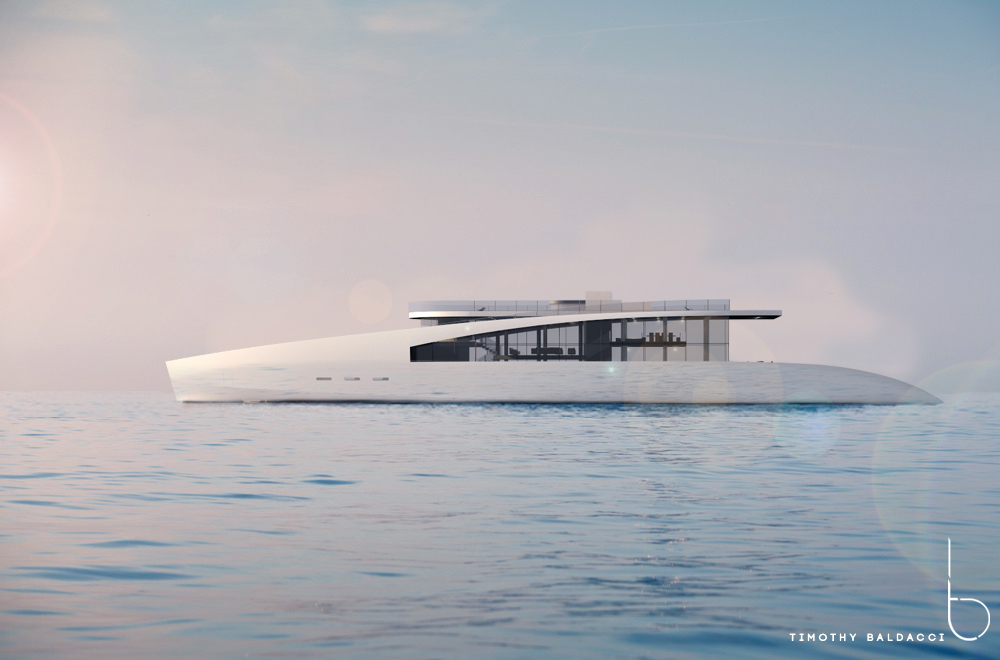
Ardea Alba is a 80-meter yacht concept developed by Timothy Baldacci. Inspired by the elegant head of an Ardea Alba, or Great White Egret bird, her design is at the same time interpreted as a futuristic take on ancient triple-decker warships called triremes that were a key to sea power for the ancient Greeks, Phoenicians, and Romans.
The superyacht has dynamic shape and low-profile style. The superstructure nearly entirely consists of glass surfaces, offering an uninterrupted views of the surroundings. The limousine and general-use tenders offer a comfortable and safe experience in a minimalistic environment.
HARD 97
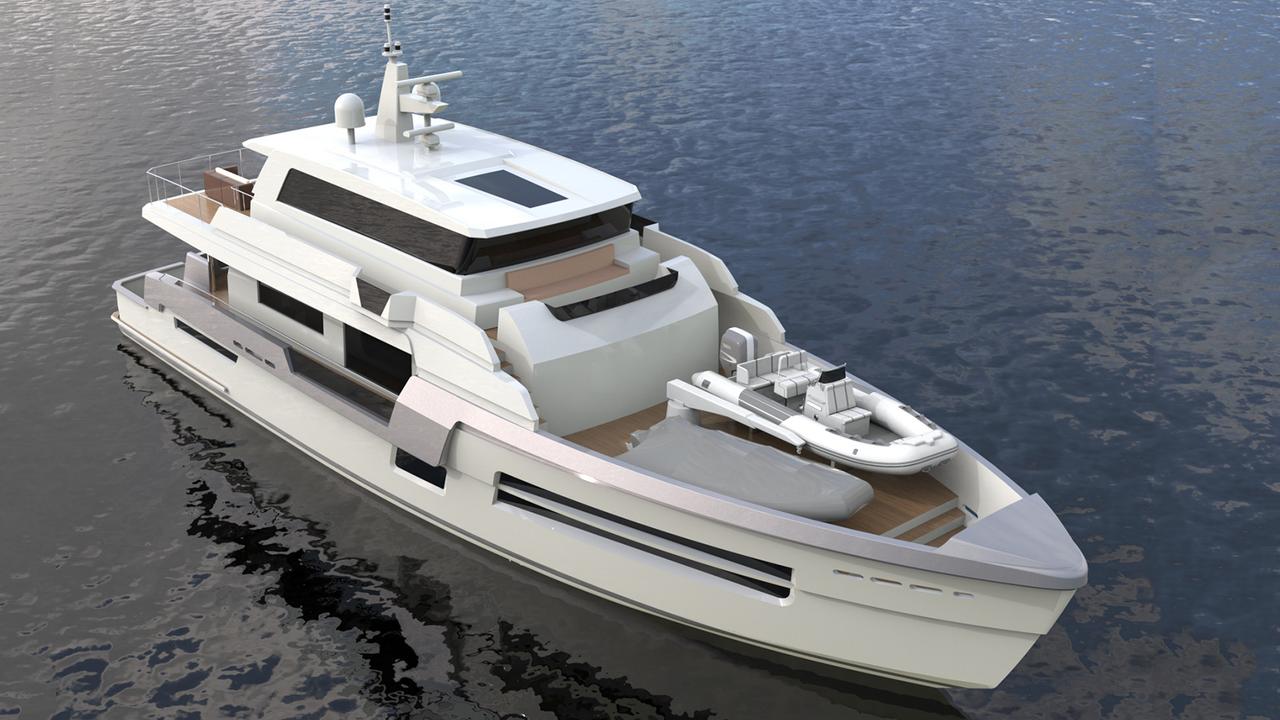
The U.S.-based “virtual shipyard” H.A.R.D., standing for “historic armor-reinforced design”, commissioned Chinese HeySea shipbuilder to construct a particularly strong 30-meter superyacht HARD 97, equipped for cruising in extreme conditions of the Arctic region. For this purpose, the naval architect Nick Boksa has developed a contemporary fiberglass version of the historic “Kochi” hull, which was common in the fleet of the Northern Russians in the XI century.
While the hull’s shallow draft minimized the risk of grounding, the yacht’s seaworthiness is ensured by Kevlar reinforcement and stainless steel cladding around the high stress points. A solid laminate is applied below the waterline in combination with core composite above. As a result, the yacht will be able to not only cruise among the ice, but to be deliberately frozen into the ice without damage for years. Powered by twin 1.000 hp Caterpillar C18 engines, giving a cruising speed of 12 knots, HARD 97 is expected to have a range of 3.000 nautical miles when trimmed back to 10 knots.
Phoenicia

Phoenicia is a 110-meter sailing yacht concept reminiscent of an ancient royal ship by an Italy-based designer of Russian origin, Igor Lobanov. She derives her name from a civilization originated in the 1500s BC in the Mediterranean. Phoenicians are believed to be the people, who invented one of the first alphabets, which served as the basis for the Greek literacy. Those ancient traders influenced many nations in the area, acting as a link between the Eastern and Western cultures.
In the mind of her creator, this essentially cosmopolite yacht concept is nothing but a pure expression of a free spirit, “looking with interest and curiosity to new shores, different cultures and various ways of life”.
Shaped like a top part of the star, the yacht has an unconventional bow, which is one of many hints to ancient Mediterranean influence.

The key concept idea behind Phoenicia is an all-around open deck arranged as a gallery with a special Arabian pattern, giving an interesting play on light and shade. The superyacht has a generous open deck space at the aft, enough even to host a helipad. Other features include automated Venetian blinds that can be closed as a gradient from the bow to the aft of the boat and from the top to the bottom, or opened irregularly, so that the light plays inside the interior.
Norse

Last year British design studios BMT Nigel Gee and Oliver Stacey Design introduced a 80-meter sail-assisted explorer yacht concept named Norse that was inspired by Viking boats.
“When we were initially looking for a conceptual thread for the design, I had recently seen the Viking Voyagers exhibition at the National Maritime Museum in Falmouth. The extensive range and endurance of the longboat. The adventuring spirit of the Vikings. The use of sail as a secondary power source. These are the inspirational reference points which led to the development of Project Norse”, Oliver Stacey explains.
With a profile borrowed from the longboat, Norse offers unprecedented for a vessel of her size access to shallow waters. Her simple, low-aspect sail plan features three identical wing masts, in combination with matched in-boom furling mainsails. She is designed for voyaging to both Poles and exploring some of the world’s most remote destinations with assistance of a hybrid propulsion system, which can take over as the winds drop. In line with the vessel’s transatlantic range and extended self-sustainability, Norse will be built to Ice Class 1d, meeting Category C requirements of the Polar Code.
Origami

The Monaco-based designer George Lucian created a 100-meter sailing yacht inspired by Oriental maritime tradition and Japanese craft of folding paper that actually gave this concept boat her name – Origami.
“The project is designed for an owner who would not be afraid of stepping out of the traditional sailing yacht shapes, and go beyond anything that was built before, in terms of design, technology and environmental friendliness”, observes George Lucian regarding this daring yacht concept.
Origami strikes with a seemingly light, “paper-weight”, structure, contrasting the boat’s considerable size. The yacht features various convertible elements, such as one portside section of the hull folding out to create a touch-and-go helipad. When this is done, the interior area stays protected by a glass wall, which allows for beautiful sea views, when the yacht is at anchor or in calm seas. The main mast, rising from the middle of a beam-wide glass-sided swimming pool, culminates in “crow’s nest”.
Ardea Alba

Ardea Alba is a 80-meter yacht concept developed by Timothy Baldacci. Inspired by the elegant head of an Ardea Alba, or Great White Egret bird, her design is at the same time interpreted as a futuristic take on ancient triple-decker warships called triremes that were a key to sea power for the ancient Greeks, Phoenicians, and Romans.
The superyacht has dynamic shape and low-profile style. The superstructure nearly entirely consists of glass surfaces, offering an uninterrupted views of the surroundings. The limousine and general-use tenders offer a comfortable and safe experience in a minimalistic environment.
HARD 97

The U.S.-based “virtual shipyard” H.A.R.D., standing for “historic armor-reinforced design”, commissioned Chinese HeySea shipbuilder to construct a particularly strong 30-meter superyacht HARD 97, equipped for cruising in extreme conditions of the Arctic region. For this purpose, the naval architect Nick Boksa has developed a contemporary fiberglass version of the historic “Kochi” hull, which was common in the fleet of the Northern Russians in the XI century.
While the hull’s shallow draft minimized the risk of grounding, the yacht’s seaworthiness is ensured by Kevlar reinforcement and stainless steel cladding around the high stress points. A solid laminate is applied below the waterline in combination with core composite above. As a result, the yacht will be able to not only cruise among the ice, but to be deliberately frozen into the ice without damage for years. Powered by twin 1.000 hp Caterpillar C18 engines, giving a cruising speed of 12 knots, HARD 97 is expected to have a range of 3.000 nautical miles when trimmed back to 10 knots.
